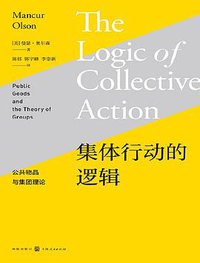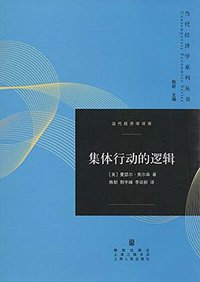The Logic of Collective Action
豆瓣
Public Goods and the Theory of Groups, Second printing with new preface and appendix
Olson, Mancur
简介
This book develops an original theory of group and organizational behavior that cuts across disciplinary lines and illustrates the theory with empirical and historical studies of particular organizations. Applying economic analysis to the subjects of the political scientist, sociologist, and economist, Mr. Olson examines the extent to which the individuals that share a common interest find it in their individual interest to bear the costs of the organizational effort.
The theory shows that most organizations produce what the economist calls "public goods"--goods or services that are available to every member, whether or not he has borne any of the costs of providing them. Economists have long understood that defense, law and order were public goods that could not be marketed to individuals, and that taxation was necessary. They have not, however, taken account of the fact that private as well as governmental organizations produce public goods.
contents
Preface, 1971
Introduction
I. A Theory of Groups and Organizations
A. The purpose of organization
B. Public goods and large groups
C. The traditional theory of groups
D. Small groups
E. “Exclusive” and “inclusive” groups
F. A taxonomy of groups
II. Group Size and Group Behavior
A. The coherence and effectiveness of small groups
B. Problems of the traditional theories
C. Social incentives and rational behavior
III. The Labor Union and Economic Freedom
A. Coercion in labor unions
B. Labor-union growth in theory and practice
C. The closed shop and economic freedom in the latent group
D. Government intervention and economic freedom in the latent group
IV. Orthodox Theories of State and Class
A. The economists’ theory of the state
B. The Marxian theory of state and class
C. The logic of the Marxian theory
V. Orthodox Theories of Pressure Groups
A. The philosophical view of pressure groups
B. Institutional economics and the pressure group—John R. Commons
C. Modern theories of pressure groups—Bentley, Truman, Latham
D. The logic of group theory
VI. The “By-Product” and “Special Interest” Theories
A. The “by-product” theory of large pressure groups
B. Labor lobbies
C. Professional lobbies
D. The “special interest” theory and business lobbies
E. Government promotion of political pressure
F. Farm cooperatives and farm lobbies
G. Noneconomic lobbies
H. The “forgotten groups”—those who suffer in silence
Appendix
Index



